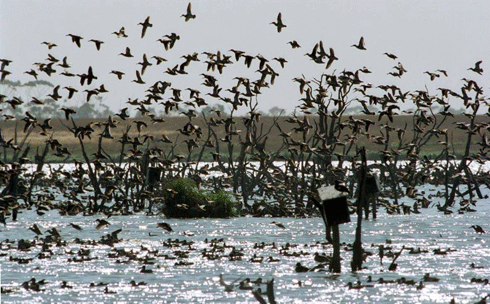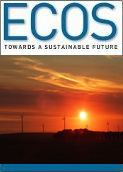
|
Published: 20 August 2012
Squeezing more water out of every glass
Improving the productivity and value of existing water supplies – which basically means ‘getting more out of a glass of water’ – is the key to tackling the threat of global shortages, according to researchers from the University of Melbourne.
The researchers reviewed new methods of water conservation in the article ‘Taking the “waste” out of wastewater for human water security and ecosystem sustainability’, recently published in a special issue of Science.
These new methods include substituting high-quality water with lower-quality water where appropriate, creating drinking water from wastewater, and reducing leaks and the volume needed for basic services. The authors also discuss the need to transform policies and attitudes.
To combat the effects of drought and address limited water supplies, parched cities and regions across the globe are now using sewage effluent and other wastewater in creative ways to augment drinking water – but four billion people still do not have adequate supplies.
Wildlife, rivers and ecosystems are also being decimated by the ceaseless quest for new water and disposal of waste. Changing human behaviour and redoubling the use of alternative water supplies are critical to breaking that cycle.
‘This is the only path forward to provide water for humans as well as for ecosystems,’ said the study’s lead author, Professor Stanley Grant, a specialist in water quality at the university’s School of Engineering.
‘We need to focus on improving the productivity and value of existing supplies, which basically means getting more out of a glass of water.’
Co-author Dr Michael Stewardson from the university’s Department of Infrastructure Engineering says Australia is leading the world in tackling the challenge of water scarcity. ‘We understand the need to grow the value we get from scarce water for food security, energy generation, ecosystem health, industrial use and cities,’ he said.
From Fountain Valley, California, to Melbourne, Australia, and Israel and Brazil, the researchers found homeowners and major utilities are capturing liquid sewage, highway runoff, household laundry water and rainfall. In some cases, alternative sources are a major contributor to replenishing pristine water. Elsewhere they are a drop in the bucket.
Altering individual habits could be tougher. Turfgrass still consumes nearly three-quarters of residential drinking water in the USA’s arid areas. Homeowners may eventually have no choice but to replace lawns with drought-friendly landscapes. Engineered wetlands and other ‘biofilters’ that capture storm water runoff are also part of the solution.
‘These complementary options make the most of scarce freshwater resources, serve the varying water needs of both developed and developing countries, and confer a variety of environmental benefits,’ the researchers conclude.
‘Their widespread adoption will require changing how freshwater is sourced, used, managed and priced.’
Source: University of Melbourne




